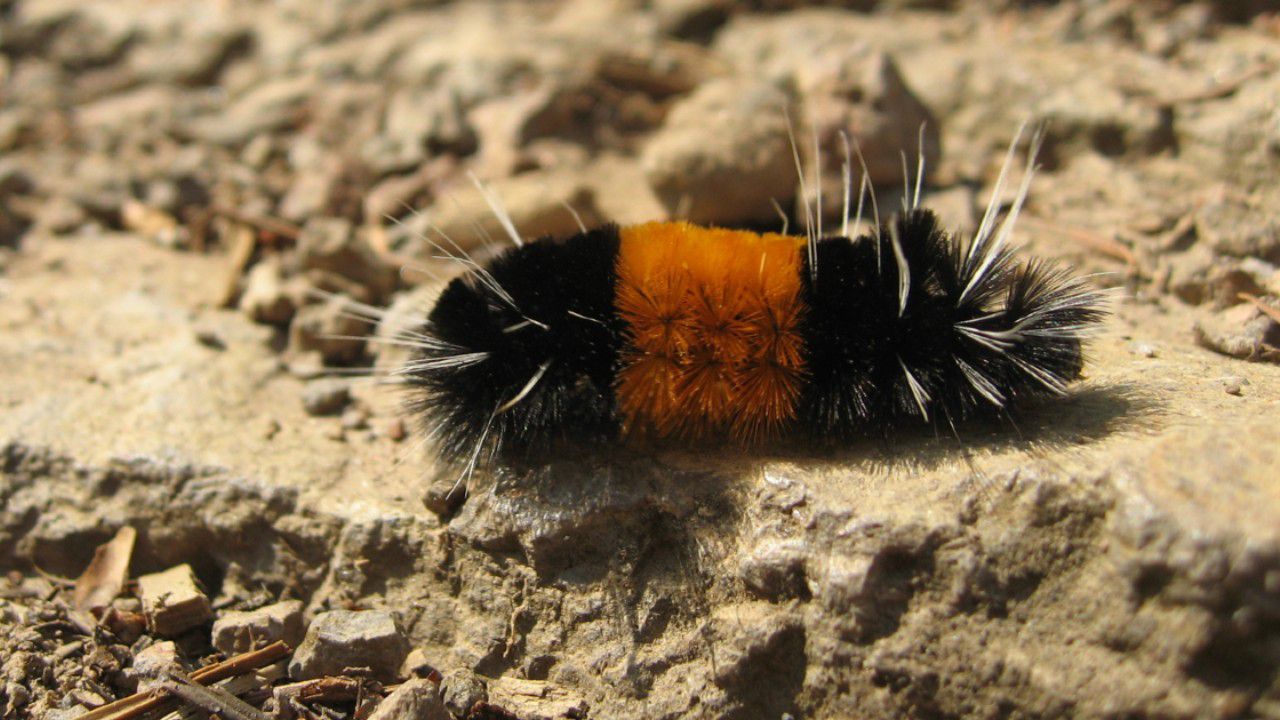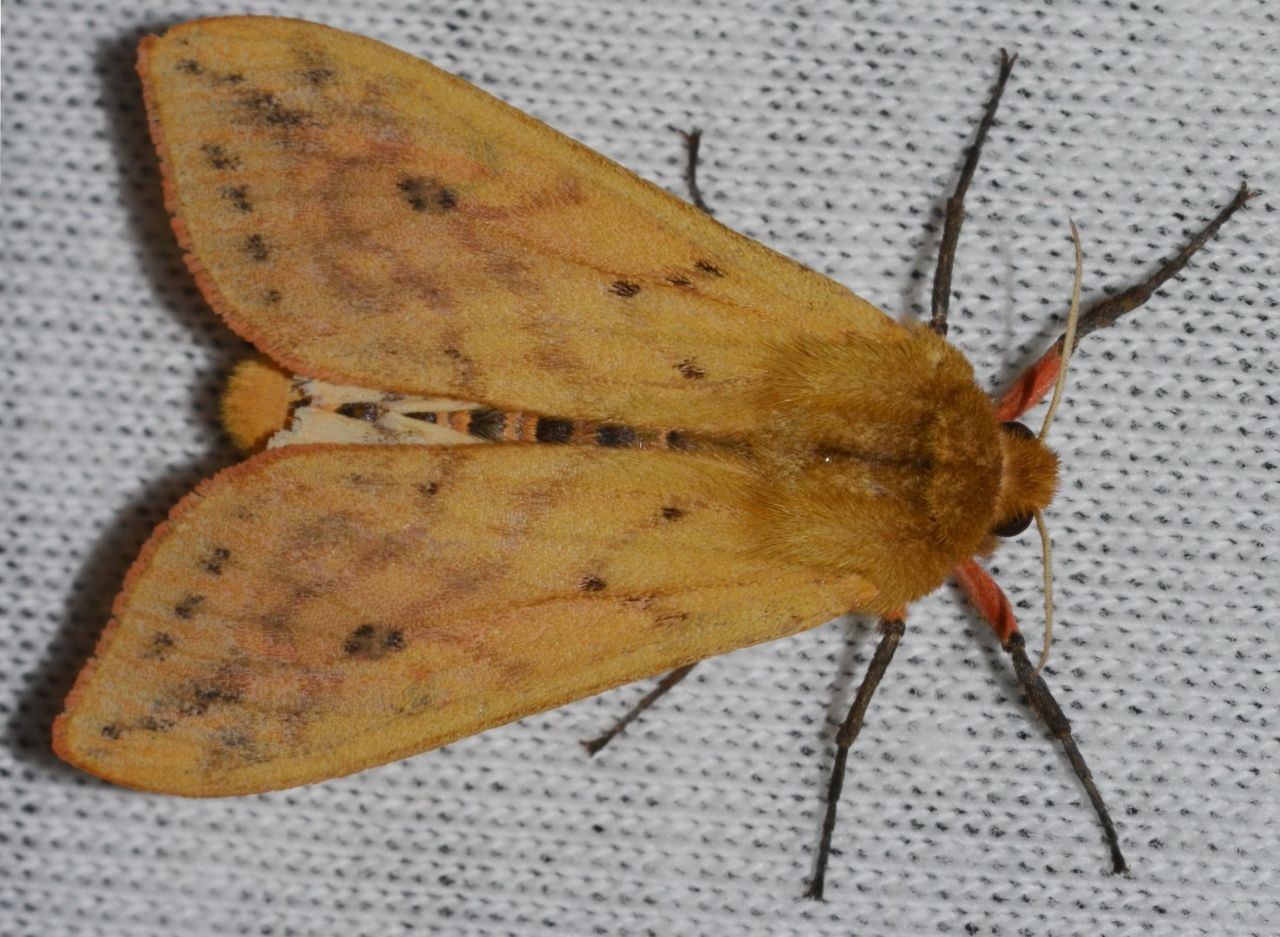Before meteorologists started predicting the upcoming winter season, people relied on all sorts of weather lore.
One famous bit of folklore claims that the stripe on the back of a woolly caterpillar indicates the severity of the upcoming winter.
This saying is popular across New England and the Midwest, especially as winter draws nearer each year.
Known for their fuzzy nature and black bands, they're sometimes called woolly bear or fuzzy bear caterpillars. They are often found in the fall. The caterpillar will leave its plants, usually a variety of grasses and weeds, in search of a spot to hibernate for the winter.
It turns out there are two versions of the folklore of the woolly caterpillar.
In the fall, the amount of black on the woolly caterpillar is supposedly linked to the severity of the upcoming winter. It’s important to note that the black varies not only in each season, but in different areas, too.
According to the legend, the longer the woolly bear’s black bands, the more severe the winter will be–longer, colder and snowier. On the flip side, the wider the middle brown band is, the milder the upcoming winter will be.
In addition, the position of the longest dark band is said to indicate which part of winter will be coldest and hardest. So, if the head end is dark, then the beginning of winter will be worse. If the opposite end is dark, the end of winter will be colder.
According to the folklore, the 13 segments of the caterpillar’s body correspond to the 13 weeks of winter. And the "woolier" the coat, the colder the winter.
Another version deals with the woolly caterpillar’s direction of travel. Basically, it states that if it’s crawling in a southerly direction, then it's trying to escape winter’s cold from the north. On the other hand, if the woolly bear is moving north, then a mild winter is coming.
The myth has been around as far back as colonial times. However, it began to grow after Dr. Charles Howard Curran wrote a study in 1948. He counted the brown bands on 15 different specimens and made a winter prediction... which turned out to be accurate, according to Ohio State University Extension's Joe Boggs.
The legend’s popularity has spread because of several festivals honoring the caterpillars. Just like with the famous groundhog Punxsutawney Phil, people celebrate the woolly bear’s winter prediction and the weather folklore.
In fact, Vermilion, Ohio holds an annual "Woollybear Festival." It started in 1973 and was in part came about because of Cleveland’s longtime weather forecaster Dick Goddard. Another famous festival in Banner Elk, N.C. is called "Woolly Worm Festival," where they hold worm races! Festivals all over the country honor the famous woolly bear legend.
As much fun as it is to search for the woolly worm each fall, don’t put your bets on it. The caterpillar can’t predict what Old Man Winter has in store for the upcoming winter season.
The caterpillar’s coloring is thought to be based on its age, how long it’s been feeding and its species. In North America, there are over 200 species.
The better the preceding growing season, the bigger the woolly worm will grow. The width of the banding is an indicator of the current or past season’s growth.
So, the coloring and size of the woolly worm tell us about the past, not the future.
Caterpillars shed their skins several times before reaching adult size, and their colors change with their age, too. As a result, we may see many different color and hair variations each fall that would alter the folklore’s forecast.
The woolly caterpillar’s coat helps it survive the winter, living through temperatures as low as -90 degrees!
Lastly, the caterpillar travels north, south, east or west in search of a place to curl up and hibernate for the winter. That's all there is; they just want to sleep for the winter in a dark, sheltered spot.
By springtime, the caterpillar forms a cocoon, and a few weeks later becomes an Isabella tiger moth, which is active at night throughout the summer.
Our team of meteorologists dives deep into the science of weather and breaks down timely weather data and information. To view more weather and climate stories, check out our weather blogs section.




